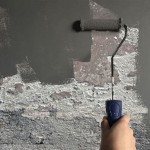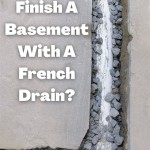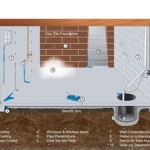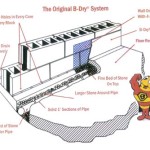How To Repair a Crumbling Concrete Basement Floor
A crumbling concrete basement floor presents both a structural and aesthetic challenge. Left unaddressed, the deterioration can worsen, leading to further damage and potential safety hazards. Fortunately, several repair methods exist, allowing homeowners to restore the integrity and appearance of their basement floors.
The first step in any concrete floor repair project involves a thorough assessment of the damage. This includes identifying the cause of the crumbling. Common culprits include moisture intrusion, freeze-thaw cycles, chemical exposure, and simply the passage of time. Knowing the root cause allows for a more targeted and effective repair strategy. The assessment should also include noting the extent and severity of the damage, ranging from superficial surface dusting to deep, structural cracks.
Once the damage is assessed, the next step is surface preparation. This critical phase ensures proper adhesion of the repair materials. Loose concrete, dust, and debris should be completely removed. A wire brush, scraper, or even a chisel can be used for this purpose. For larger areas, a power grinder with a diamond cup wheel can be highly effective. Any oil or grease stains should be cleaned with a degreaser designed for concrete. Finally, the area should be thoroughly rinsed and allowed to dry completely.
For minor surface dusting or shallow spalling (flaking), a concrete resurfacer can be an appropriate solution. Resurfacers are cementitious products designed to bond with existing concrete, creating a smooth, durable new surface. They are typically applied with a trowel or squeegee, following the manufacturer's instructions. Before applying a resurfacer, the concrete surface must be primed with a bonding agent to ensure proper adhesion.
Deeper cracks and more significant damage require a different approach. For cracks less than ¼ inch wide, a concrete crack filler can be used. These fillers are available in various formulations, including epoxy, polyurethane, and acrylic. They are injected into the crack, where they expand and harden, effectively sealing the gap and preventing further deterioration. Wider cracks require a patching compound. These compounds are typically mixed with water and applied with a trowel, filling the void and creating a seamless repair.
When dealing with extensive crumbling or significant structural damage, a complete concrete overlay might be necessary. This involves pouring a new layer of concrete over the existing floor. Before pouring the overlay, the existing surface must be thoroughly cleaned and prepared, as described earlier. A bonding agent should be applied to ensure proper adhesion between the old and new concrete. The thickness of the overlay will depend on the extent of the damage and the intended use of the basement floor.
Moisture is a common contributor to concrete deterioration. Addressing any underlying moisture issues is crucial for the long-term success of the repair. This might involve installing or improving exterior drainage systems, sealing cracks in the foundation walls, or installing a sump pump. Proper ventilation can also help reduce moisture levels in the basement.
Working with concrete involves handling potentially hazardous materials. Appropriate safety precautions should always be observed. This includes wearing eye protection, gloves, and a dust mask, especially during the surface preparation and grinding stages. Adequate ventilation is also essential when working with concrete repair products.
Different concrete repair products have varying working times and curing times. It's essential to carefully follow the manufacturer's instructions for each product used. This includes mixing ratios, application methods, and recommended curing times. Allowing sufficient curing time is crucial for achieving the desired strength and durability of the repair.
The specific repair method chosen will depend on the nature and extent of the damage, the budget, and the desired outcome. For minor surface issues, a resurfacer or crack filler might suffice. For more significant damage, patching compounds or a complete overlay may be required. Consulting with a qualified concrete contractor can provide valuable insights and guidance on the best course of action for specific situations.
Preventative measures can help extend the lifespan of a concrete basement floor and minimize the risk of future crumbling. Regular cleaning and inspection can help identify potential problems early on. Applying a concrete sealer can protect the surface from moisture and chemical penetration. Addressing any drainage or moisture issues promptly can also prevent future damage.

How To Fix Crumbling Concrete Basement Floor Legacy Applications

Concrete Floor Crumbling Causes And How Best To Fix It Doityourself Com Community Forums

Concrete Floor Crumbling Causes And How Best To Fix It Doityourself Com Community Forums

Concrete Floor And Wall Repair Youtube

That Time I Started A Basement Renovation On Whim Part Ii Repairing And Painting The Crumbling Concrete Floor M Pettipoole

How Can I Salvage A Crumbling Cracked 24x24 Triangle Shaped Concrete Patio Without Tearing It Out Hometalk

How To Repair A Concrete Foundation That S Crumbling

Signs Of Crumbling Foundation How To Fix It Kent Repair

5 Simple Fixes For Worn Concrete Bob Vila

Ayers Basement Systems Foundation Repair Photo Album Waterproofing And Restoring A Crumbling In Blanchard Mi
Related Posts







